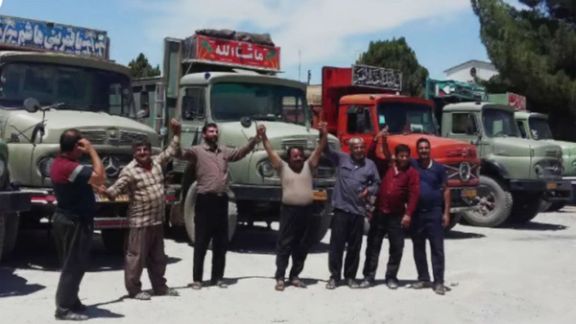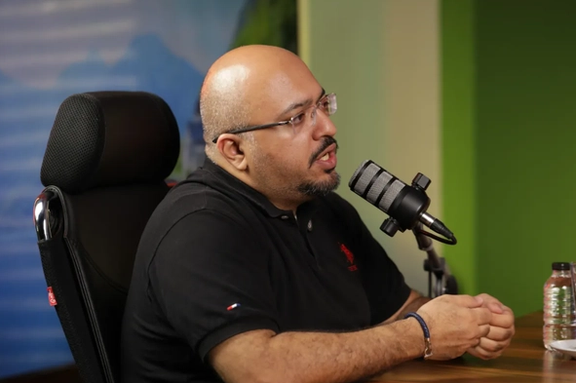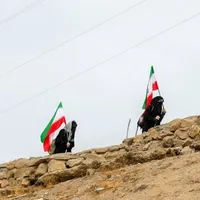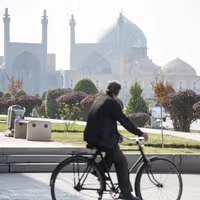“Strikes in Iran, particularly transportation strikes, have the potential to paralyze the regime,” said Alireza Nader, a political analyst and former senior policy advisor at the RAND Corporation, a non-profit, nonpartisan think tank based in the United States.
The truckers’ strike began on May 22 in the strategic port city of Bandar Abbas and has rapidly spread to over 141 cities across Iran in less than a week. What started as a protest against fuel quota cuts has evolved into a nationwide movement exposing deep-seated grievances.
“This unity and solidarity is the result of your determination,” the truckers' union wrote in a statement. “Thanks to all the drivers, small freight operators, teachers, retirees, workers and free citizens who joined us. Our path is clear and we will persist.”
Truckers are demanding fair fuel pricing, insurance coverage, and livable freight rates. Footage from cities like Marivan and Bandar Abbas shows major highways eerily empty, a striking visual of collective defiance.
“If bus drivers, train drivers, and energy workers strike, you have communications, transportation, and energy cut off. That’s why the regime is worried,” said Nader, drawing parallels to the pivotal economic strikes that brought down the Shah during the 1979 revolution.
'A cry for dignity'
For human rights advocate Nazanin Afshin-Jam, the protests are about more than economics.
“This is not just about wages or fuel prices,” she said. “It’s a broader cry against corruption, mismanagement, and the regime’s failure to provide basic needs.”
Economist Mahdi Ghodsi, with the Vienna Institute for International Economic Studies, noted that truckers are emblematic of a larger crisis.
Even basic survival is out of reach for most Iranians. The statistics are chilling:
“60% of Iranians can’t meet basic calorie needs. Truckers earn less than €200 a month and pay European-level food prices,” he said, adding that the Iranian rial has lost 98% of its value since 2011, while inflation hovers above 40%.
Afshin-Jam shared that she regularly receives desperate messages from inside Iran. “Every day I get messages from people saying they have no food, they’re getting evicted. This is the reality across Iran.”
The Islamic Republic's dilemma
Unlike past protests, the truckers are not openly calling for regime change, nor are they violating the law by refusing to work. This puts the Islamic Republic in a difficult position: it cannot easily suppress the strike without risking escalation, nor can it offer concessions without appearing weak—especially amid ongoing nuclear negotiations with the US.
Iran’s freight sector is uniquely decentralized, with over 550,000 drivers operating 433,000 trucks—93% of which are individually owned. This grassroots structure makes the movement harder to crush.
“Most of these truckers own their vehicles. So technically, they’re not breaking any laws by refusing to work,” said Nader. “They’re not explicitly calling for the overthrow of the political system—they just can’t work.”
That ambiguity puts the Islamic Republic in a bind: the strike is disruptive but not overtly political, making it harder to justify a violent crackdown without risking backlash or further unrest.
Nonetheless, the Islamic Republic has begun cracking down. At least 20 people have been arrested, including drivers accused of filming strike footage for foreign-based media.
Echoes of past uprisings
Iran has a history of economic protests turning political. The 2019 “Bloody Aban” or "Bloody November" uprising, triggered by a 200% fuel price hike, quickly morphed into a movement against the government and was met with lethal force.
Today’s trucker strike shows similar signs of escalation. More than 180 rights and student organizations linked to the Woman, Life, Freedom movement have announced their support.
“We're seeing a deep cross-sectional support from other unions, students, teachers, and marginalized groups,” said Afshin-Jam. “This is about justice and dignity.”
Award-winning filmmaker Jafar Panahi and Nobel Peace Prize laureate Narges Mohammadi have also publicly backed the strike. “The strike is a loud cry to the government: enough is enough! Stop the massive suppression and plundering,” Panahi wrote on Instagram.
Iran’s exiled Prince Reza Pahlavi has also voiced his support and advocated for non-violent civil disobedience.
A tipping point?
As the strike disrupts supply chains and inflation worsens, some believe Iran is reaching a critical juncture.
“Economic strikes are hard to suppress because they don’t follow the usual playbook,” Ghodsi explained. “They’re not violent. They’re not demanding regime change. But they can shut the country down.”
Iran’s government is reportedly using trucks linked to the Islamic Revolutionary Guard Corp (IRGC) to transport goods, but experts say this is unsustainable.
Looking ahead, Ghodsi warned of further unrest if the truckers’ demands go unmet. “If this continues, other sectors could join. And that’s when it becomes unstoppable.”
The diaspora’s role
Afshin-Jam called on Iranians abroad and international allies to raise awareness and provide support.
“The Iranian diaspora community needs to dig deep in their pockets and find ways to send money back home to keep this strike going,” she said.
She also urged action from Western governments and labor unions, including the AFL-CIO and the International Labour Organization, to support Iran’s striking workers—much like they did during South Africa’s apartheid era.
For now, the truckers’ movement continues to grow, fueled by desperation—but also by a vision of justice.
You can watch the full episode of Eye for Iran on YouTube or listen on any major podcast platform like Spotify, Apple, Amazon Music, or Castbox.












